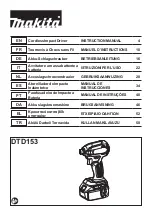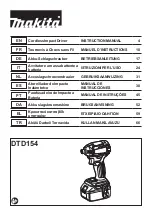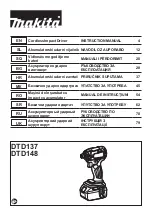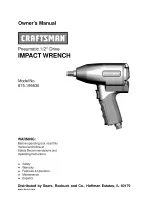
WARNING:
If the work area is not equipped with a permanently installed Ground Fault Circuit
Interrupter outlet (GFCI), use a plug-in GFCI between the power tool or extension cord and the power
receptacle.
WARNING:
If an extension cord is necessary, use only ‘Listed’ extension cords. If used outdoors,
they must be marked “For Outdoor Use”.
WARNING:
Use of improper size or gauge of extension cord may cause unsafe or ine
ĸ
cient
opera
Ɵ
on of your tool, or cause damage to your tool. Be sure your extension cord is rated to allow
su
ĸ
cient current
Ň
ow to the motor. If in doubt, always use a larger gauge cord. Be sure to check the
voltage requirements of the tool to your incoming power source.
NOTE
: The table below shows the correct size to use according to cord length and the amperage
draw of the tool (speci
Į
ed on the nameplate). When in doubt, use the next heavier gauge. The smaller
the gauge number, the heavier the cord. (AWG = American Wire Gauge).
Minimum Gauge for Extension Cords (AWG)
(when using 120 volts only)
Ampere Ra
Ɵng
Total Length of Cord in Feet (meters)
More Than
Not More Than
25' (7.6m)
50' (15m)
100' (30.4m)
150' (45.7m)
0 6 18
16
16 14
6 10 18
16 14 12
10 12 16
16 14 12
12 16 14
12 Not Recommended
NOTE
: The term “power tool” in the warnings refers to your electrically operated (corded) power
tool or ba
Ʃ
ery operated (cordless) power tool.
WARNING:
Beware of all power lines, electrical circuits, water pipes and other mechanical
hazards in your work area, par
Ɵ
cularly those below the work surface hidden from the operators view.
Uninten
Ɵ
onal contact with these hazards may cause personal injury or property damage.
Power Tool Use and Care
WARNING:
Do not force the power tool. Use the correct power tool for your applica
Ɵ
on. The
correct power tool will do the job be
Ʃer and safer at the rate for which it was designed.



























